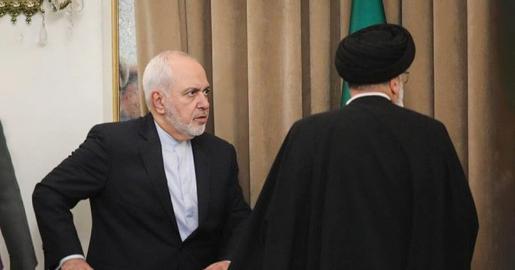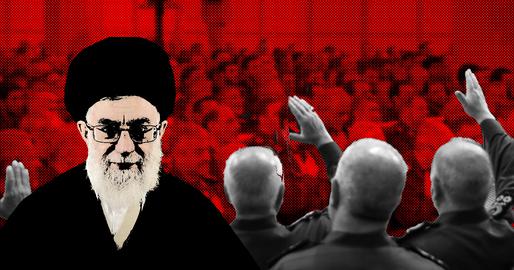As dramatic events began to unfold in Iran in 1978, journalists and photojournalists took to the streets to document history in the making. For many, the chief chronicler of Iran’s Islamic Revolution is the legendary photographer Abbas, whose photographs recorded the people, the events and the extraordinary emotions that swept across the nation, and throughout the world.
To celebrate the launch of an exciting new project about Abbas’s life and work, IranWire and Journalism is Not a Crime talked to journalists who covered the revolution about their memories of the incredible events in Iran — and how they see the country today.
* * *
As former foreign correspondent for the Guardian newspaper, Martin Woollacott witnessed the Iranian Revolution at close range: the protests that suddenly turned violent; the worsening restrictions on journalists as the new regime gained power; the deep divisions in Iranian society that quickly turned people’s hopes into disappointments, and how the revolution became the foundation of many current conflicts in the Middle East.
What was it like being in the middle of what turned out to be a historic event?
It was very exciting. And as a journalist of course you knew that this moment was the most important story in the world. Everybody wanted to know what was happening, and you were there. So it was very exciting, very invigorating. It was a rollercoaster of events and emotions.
How would you describe Iran at the time of the revolution?
I was skeptical of the revolution. I found the enthusiasm of the massive Iranian middle class for the revolution puzzling. Very few people understood that they had little common ground with the religious class. The middle class didn’t understand that a revolution was not going to be a happy event. That turned out to be right. There were Iranians who were skeptical about the revolution, but on the whole people were seduced by the idea that there was going to be real transformation of national life.
Nevertheless, it was hard not to respond to the desire of Iranians for change. It was stunning and really impressive to see people turning out collectively in thousands with a common purpose, linking arms: men and women, people of different classes, and different backgrounds. It was quite extraordinary. It goes to show that revolutions have two sides. It was a time of great hope, and then afterwards great disappointment.
The revolution was coming, and the reasons for it were understandable. They ranged from the gradual erosion of respect for the Shah to the dissatisfaction with the way things were: corruption, the fact that Tehran wasn’t working properly, that electricity didn’t come on, phones didn’t work. And of course there was the religious aspect, which tipped it over the edge. And then you had this alliance of the secular left, the liberals, and the religious, which was very artificial.
Underneath the surface you had a very divided society, which was going to find it very hard to chart a new path. It had a potential for extreme internal violence and a fight in which the radical religious were likely to gain the upper hand — as indeed they did.
What was one of the most significant moments from the revolution for you?
One special moment was at the square near the national police headquarters. There was a confrontation between demonstrators and the army. There were many people massed into the square and probably about 150 Iranian soldiers were all lined up in front of the police buildings. We journalists were jumping around on the edges, trying to see what was happening. Then the soldiers were ordered to fire. They did — although not all of them. They fired into the crowd and people were killed. And then everybody turned and ran. It was frightening, dramatic, and also tragic. I don’t think the soldiers wanted to fire, and I don’t think the demonstrators had expected to be fired on. It was just one of those times where violence happens because of the situation. It lives on in my memory as one of those moments where events just run out of control. That was just one of the numbers of occasions where demonstrations went bad.
As a journalist, what do you do in a situation like this where a protest turns violent?
You watch of course, but you are also concerned for your own safety. We, the groups of journalists I was with, ran away; we thought we might get killed. So we ran down one of the small streets near the square and a door suddenly opened off the street and a man beckoned us to come in. We rushed into this man’s home and then we went up to the first floor of his apartment, from where we watched the soldiers coming down, sometimes shooting or hitting people. So we did what most people do; we got scared and we ran.
How was the attitude towards foreigners during the revolution?
It was incredible. There was an incredible deference to foreigners – particularly the journalists – that they were not a part of the fight and they certainly weren’t to be harmed. I can’t remember any sense of threats from crowds or anything like that. I had one or two colleagues who were in provincial places, who sometimes felt somewhat endangered. The situation was occasionally dangerous but it wasn’t that a journalist was going to be lynched, bullied or beaten.
How was it working as a journalist in Iran back then? What kind of restrictions did you experience?
Whilst it was still the Shah’s regime, although Western journalists thought there were difficulties, by comparison with what came later it was very free. You could visit Iran, travel through the country, and go where you wanted to go. There were no particular obstacles. We always used to think that our telephone calls were being monitored, and people thought they were occasionally followed. Maybe some of them were. We used to think we had to be careful when we went to see Iranian dissidents. But that was probably largely fantasy. The restrictions on the foreign press under the Shah were not very serious. And particularly as the revolution approached, the whole atmosphere in Iran became freer. When I first went to Iran the year before the revolution, people were being fined for criticizing the Shah. They avoided political conversations. By the time the revolution was on the horizon, people were openly complaining, and they would talk to journalists quite regularly. So it was not a big problem for Western journalists and reporters before the revolution. It began to be a big problem after the revolution.
Some time into the second year of the revolution, the new regime decided that they didn’t like my reporting, and although I was not banned, I found it very difficult to get a visa. I was only able to get a visa on special occasions, such as election time. But there were not many people that were let in regularly, and so you were in a new situation, much more controlled, much more watched.
Why is the Iranian Revolution an important event that people should care about today?
It’s a cautionary tale about revolution. It’s important because people went into the revolution with absurdly naive hopes about what it would lead to. They didn’t like what they had in the Shah’s regime, but they didn’t understand that what was coming was not likely to be good. The experience has scared the Iranians, and that’s why the regime in Iran survives – and if it changes it will change slowly.
As to the broader picture, it was the beginning of the really radical violent confrontation between Sunni and Shia Islam, which we are still living with today. Had the old regime survived, it’s very unlikely that there would have been a big war between Iran and Iraq. And the war was the beginning, and is the foundation, of the terrible split between Sunni and Shia in the Middle East, which is now destroying Syria, Iraq and across the region.
For more stories and photos from the revolution, please visit our new site Abbas and the Revolution and follow us on facebook.
Related articles:
Veteran Journalist Jon Snow: “The revolution was unlike anything I’ve ever witnessed”
visit the accountability section
In this section of Iran Wire, you can contact the officials and launch your campaign for various problems

























comments